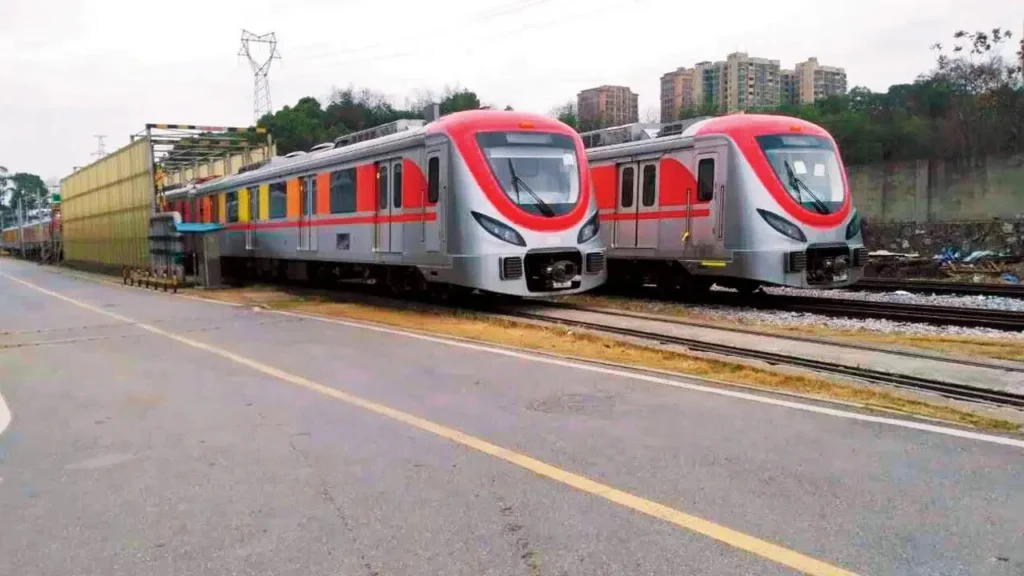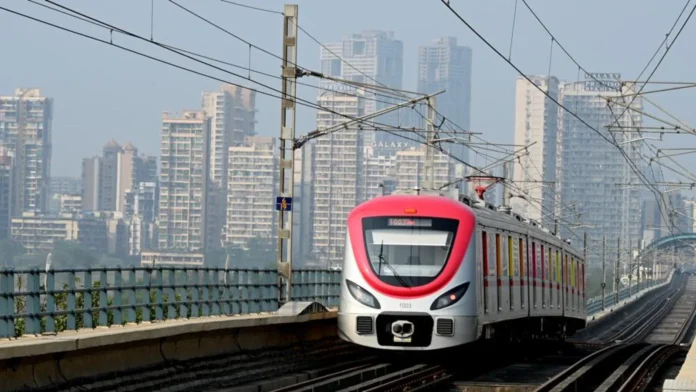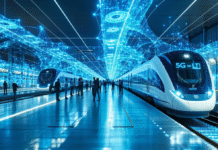Introduction
Navi Mumbai is a major planned satellite city located on the mainland adjacent to Mumbai, in the Konkan division of Maharashtra, India. Formerly known as New Bombay until 1995, the city was developed in the early 1970s to ease the growing population and infrastructure burden on Mumbai. It was designed and developed by the City and Industrial Development Corporation of Maharashtra (CIDCO), with contributions from renowned architects and urban planners such as Charles Correa, Pravina Mehta, and Shirish Patel.
Navi Mumbai lies in the Thane district and forms part of the Mumbai Metropolitan Region (MMR). Over the years, it has grown into a major hub for business and education, hosting numerous multinational corporations, IT and industrial parks (including the Millennium Business Park), and several prominent educational institutions. The city is also known for its emphasis on cleanliness and sustainability. It consistently ranks among the cleanest cities in India, securing third place in the Swachh Survekshan survey in both 2022 and 2023, and is currently ranked 5th nationally for clean air.
Why a Metro Was Essential for Navi Mumbai’s Growth?
The Navi Mumbai Metro was conceptualised to address the challenges of urban growth, connectivity, and traffic congestion in Navi Mumbai, a rapidly expanding satellite city designed to decongest Mumbai. The key reasons behind establishing the metro system include:
1. Alleviating Traffic Congestion: Navi Mumbai, despite being a planned city, experienced traffic congestion due to its role as a transit hub for Mumbai and its own growing population and infrastructure development. Over the years, this expansion led to a surge in private vehicle registrations, further straining road capacity.
2. Rapid Urbanisation: Rapid urbanisation in Navi Mumbai has been a driving force behind the need for the metro system. As the city expanded rapidly with a growing population, increased housing, and booming commercial zones, the demand for efficient public transport became urgent. As of 2025, Navi Mumbai boasts a population of approximately 1.63 million and holds the 6th position in the Ease of Living Index.
The metro system was envisioned as a fast, efficient, and eco-friendly alternative to road transport. By providing high-capacity public transit, it reduces the reliance on private vehicles, thus easing congestion in the city. As of 24th June 2024, a total of 43,08,147 passenger journeys have been recorded since the commencement of the Navi Mumbai Metro, which highlights the shift from private vehicles to public transit in the city.
Navi Mumbai: From Satellite Town to Smart City
Overview
- Navi Mumbai Metro is an urban Mass Rapid Transit System (MRTS) with 1 operational line and several proposed lines in Navi Mumbai. City and Industrial Development Corporation (CIDCO) is the agency in charge of the Navi Mumbai Metro project. The operational Line 1 of Navi Mumbai Metro spans 11.1 km between CBD Belapur – Pendhar through 11 stations.
Intervention by Maha Metro
- In February 2021, CIDCO entered into an agreement with Maha Metro for completing the balance work of Navi Mumbai Metro Line 1. Maha Metro was responsible for the Operation and Maintenance of Navi Mumbai Metro Line-1 for 10 years, starting from its Commercial Operation Date on 17th November 2023.
| In June 2024, Konkan Railway Corporation Limited (KRCL) took over the operations and maintenance responsibilities of Navi Mumbai Line 1. |

Key Specification
| Speed and Track | Top Speed: 80 kmph |
| Average Speed: 34 kmph | |
| Standard Gauge: 1435 mm | |
| Electrification | 25 kV, 50 Hz AC OHE |
| Signalling | Cab Signalling/Distance to Go |
| Rolling Stock | 24 coaches (8 train-sets x 3) supplied by CRRC |
| Estimated Daily Ridership | 1 lakh/day (2027) |
Contractor’s List
| Contract | Contractor / Status |
| GC: General Consultant of Navi Mumbai Metro | Louis Berger – Balaji Railroad System JV |
| Rolling Stock contract for 24 coaches (8 trains of 3 cars) | CRRC Zhuzhou Locomotive Co., Ltd |
| Signalling, Telecommunications, Automatic Fare Collection (AFC) | Ansaldo STS |
| Civil Package CA-1: Construction of 4.91 km viaduct from Khargar Sector 14 – Pendhar | NCC Ltd. |
| Civil Package CA-2: Construction of 4.34 km viaduct from Belapur to Khargar Sector 14 | J Kumar Infraprojects |
| Civil Package CA-12: Construction of 6 stations at CBD Belapur, Sector 7, CIDCO Science Park, Utsav Chowk, Sector 11 & Sector 14 | San José Constructora – Mahavir Roads – Supreme Infra JV |
| Civil Package CA-13: Construction of 5 stations at Central Park, Pethpada, Sector 34 Kharghar, Panchanand & Pendhar | San José Constructora – Mahavir Roads – Supreme Infra JV |
| NM-Geo: Geotechnical Investigation for Navi Mumbai Metro Line-2 and Line-3 | Zed Geotech Pvt. Ltd. |
Navi Mumbai Metro’s Operational Route
Overview
Currently, Line 1 of the Navi Mumbai Metro Rail Project is operational. The operational Line 1 of Navi Mumbai Metro spans 11.1 km between CBD Belapur and Pendhar through 11 stations. Construction work on Navi Mumbai Metro’s Line-1 started in November 2011. The Commercial Operation of Navi Mumbai Metro Line-1 started on 17 November 2023 for the public of Navi Mumbai.
Route Details
Line-1: CBD Belapur – Pendhar
- Length: 11.10 km
- Estimated Cost: Rs. 3063.63 cr
- Type: Elevated
- Depot: Taloja
- Number of Stations: 11
- Station Names: Belapur Terminal, RBI Colony (erst. Sector 7), Belpada (erst. CIDCO Science Park), Utsav Chowk, Kendriya Vihar (erst. Sector 11), Khargar Village (erst. Sector 14), Central Park, Pethpada, Amandoot (erst. Sector 34), Panchanand and Pendhar
Navi Mumbai Metro’s Proposed Route
The Navi Mumbai Metro is set for expansion with proposed Lines 2, 3, and 4, which are all extensions of the existing operational Line 1. In June 2019, CIDCO gave an in-principle approval to entrust DMRC with implementing the city’s Line-2 and Line-3.
Navi Mumbai Metro Future Network
| Line | Route | Cost | Length | Stations |
| Line 2(Extension of Line 1) | Taloje MIDC – Khandeshwar | Rs. 2820.20 cr | 7.12 km | 6 |
| Line 3(Extension of Line 1) | Taloje MIDC – Pendhar | Rs. 1750.14 cr | 3.87 km | 3 |
| Line 4 (Extension of Line 1) | Khandeshwar – Navi Mumbai International Airport (NMIA) | Rs. 1270.17 cr | 4.17 km | – |

Progress on Navi Mumbai Metro Rail Project
- CIDCO Launches QR Ticketing System for Line 1
In a major advancement towards integrated urban mobility, the CIDCO launched a QR-based paper ticketing system for Navi Mumbai Metro Line-1 on 22 June 2025, which went live on 24 June. This move aims to enhance commuter convenience, improve fare management, and support the transition to a more efficient, technology-driven transit network.
Impacts of Navi Mumbai Metro
1. Enhanced Connectivity
- With one operational corridor and more under development, the Navi Mumbai Metro has improved urban connectivity across the city.
- By linking key residential areas, business districts, and major transport hubs, the metro system ensures seamless and time-saving commutes for residents.
2. Reduced Traffic Congestion
- The Navi Mumbai Metro has played a major role in easing traffic congestion across the city. By providing a reliable and efficient public transportation option, the metro has encouraged many commuters to shift from private vehicles to public transit.
3. Economic Growth
- The Navi Mumbai project has boosted the city’s economic growth. It has increased real estate demand in areas such as Taloja, Kharghar, and CBD Belapur, while also enhancing connectivity for businesses, educational institutions, and residents.
- Additionally, the establishment of the metro system has created numerous job opportunities in the city, further contributing to economic development.
4. Delay in Project
- The Navi Mumbai Metro project has faced repeated delays due to multiple factors. Initially proposed in 2011, the project has missed several deadlines due to administrative hurdles, land acquisition issues, and contractor changes.
- Though CIDCO approved DMRC to implement Lines 2 and 3 in June 2019, there is still no clear update on the start of construction for the proposed future lines.
Conclusion
The Navi Mumbai Metro represents a transformative leap in the city’s journey from a planned satellite city to a modern smart city. While its development has faced several delays and challenges, the successful launch and operation of Line 1 mark a milestone in Navi Mumbai’s public transport infrastructure. Line 1 of the Navi Mumbai Metro Rail Project has improved mobility, reduced traffic congestion, and boosted economic activity in key areas like Kharghar and CBD Belapur. The proposed future network of Navi Mumbai aims to extend connectivity to key areas like Taloje MIDC and the Navi Mumbai International Airport. With continued expansion and efficient operation, the Navi Mumbai Metro is set to become the backbone of the city’s sustainable urban mobility and future growth.





